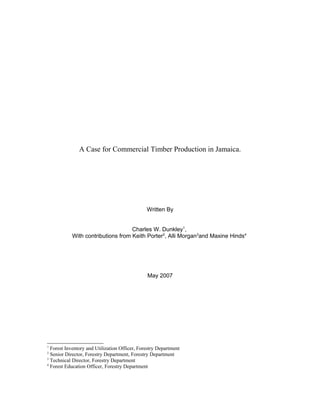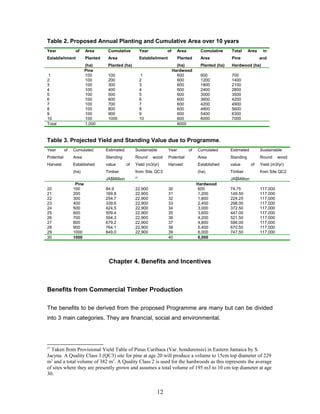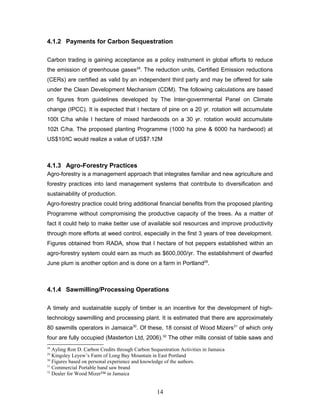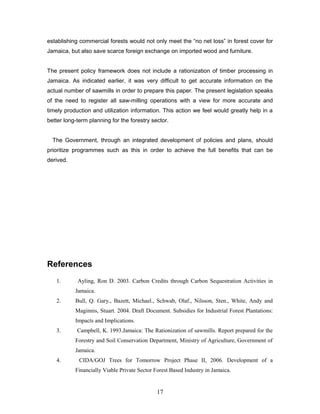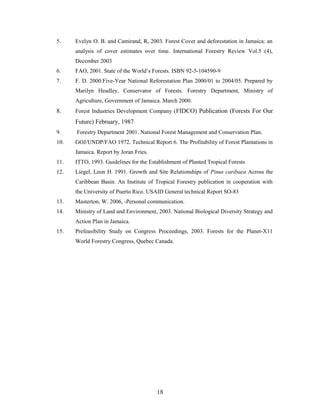This document proposes establishing commercial timber plantations in Jamaica to increase local lumber production. Over 10 years, 1,000 hectares of pine and 6,000 hectares of various hardwood species would be planted. This would increase pine production by 22,900 cubic meters per year after 20 years and hardwood production by 117,000 cubic meters per year after 30 years, for a total annual allowable cut of 139,900 cubic meters. The proposal analyzes the history of forestry in Jamaica, suitable lands, expected productivity and yields, financial feasibility, and environmental and socioeconomic benefits of establishing commercial timber plantations.
